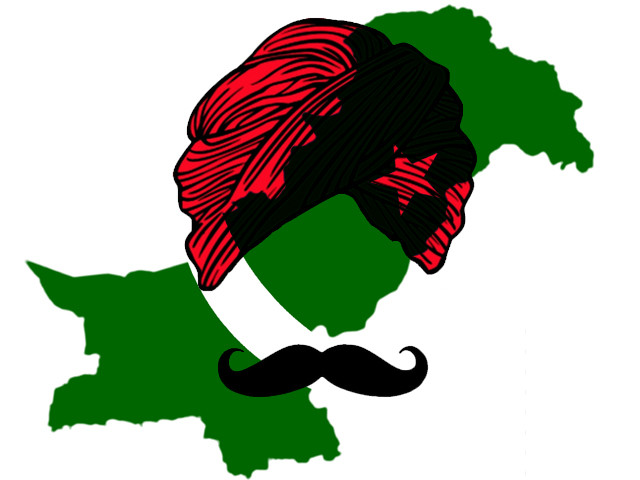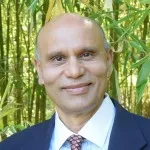‘“There is not a single newspaper or magazine published in Punjabi for the 60 million-plus Punjabi speakers,” wrote journalist Abbas Zaidi in an essay, despite it being the language of the nationally revered Sufi poet Bulleh Shah and the native-tongue of Prime Minister Nawaz Sharif.’
The historical relegation of the Punjabi language comes from the cloud overshadowing the Punjabi stance in the 1857 War of Independence, paving the way for Urdu’s ascendance. The Punjabis meekly ceded the high ground moving house to a lower cultural altitude. Urdu–indexed Punjabi is considered more refined, especially when it is adequately sprinkled with brain -twisting Urdu plurals.
If Punjabi is doing better in India, the credit goes to Sikhs. It also flourishes through Europe to North America, thanks to the Punjabi–specific Sikh liturgy and the Guru Granth Sahib Jee’s Sant Bhasha language being mainly Punjabi. Indeed, it is recognised as the third most common language in Canada. Yet, hearsay has reduced Punjabi to a crude, expletive-rich derivative of Hindi and/or Urdu and the Punjabi people as collaborators in the 1857 revolt against the British Raj. As such, defining Punjab and a Punjabi are prerequisites to setting the record straight.
So first the language, and then the 1857 blister on the reputation of Punjabis. On the eve of the 1947 partition of India, Punjab encompassed present-day southeastern Pakistan plus now gerrymandered Himachal, Haryana and Punjab of contemporary India. The inhabitants of this area are Punjabis by jus soli, or birthright.
Punjabi is a tonal Indo-Aryan language of the Indo-European group, written in the Gurmukhi, Shahmukhi and Devanagri scripts. The choice of script is usually determined by the user’s belief system.
It is the first language of almost half the population of Pakistan, and can be traced to medieval India’s Sauraseni, descended from Sanskirit and Prakrit. Its flourishing literary tradition dates from the writings of Baba Farid and Guru Nanak Dev Jee. And Punjabi is certainly not deformed Hindi or Urdu spoken by peasants getting high on black carrot kaanjee.
In the 16th and 17th centuries, the meta-language emerging from the polyglot Mughal army eventually synthesised as Urdu, a camp language. Its rise as the dominant language of north Indian Muslim culture was proportionate to the decline of Mughal power. The cultural sophistication of the 19th century, Urdu culture has been amply acknowledged by William Dalrymple in The Last Mughal.
Subsequently, the choice of Urdu as a national language completed the Muslims’ demand for Pakistan. Mr Jinnah, a consummate lawyer, prepared a very strong case. A nation means “a large body of people united by common descent, history, culture, or language, inhabiting a particular state or territory.” Urdu was inserted as the second last component.
So Urdu, the default choice for a national language, was effectively transplanted from Uttar Pradesh to unite Balochis, Bengalis, Pakhtuns, Punjabis and Sindhis, discounting the living case–study of Switzerland’s unity overcoming its four coexisting languages.
Now to the Punjabi role in the 1857 War of Independence, resistance to foreign incursion started long before 1857. The Punjabis tackled Alexander the Macedonian’s invasion attempt in two ways. Raja Ambhi capitulated and saved Taxila University, one of the world’s greatest academic institutions that left Alexander’s soldier’s awestruck.
Around two thousand years later, Maréchal Pétain, too, saved Paris from Nazi depredations by establishing the Vichy government. Porus resisted Alexander valiantly though, unallied, he lost. Like him, but unlike Pétain, De Gaulle also fought the Germans, though he only won with allied help. Centuries later, Maharajah Ranjit Singh kept the British at bay whereas rulers east of the Sutlej had started becoming their willing pawns.
So much for precedent. Events closer to 1857, clarify the Punjabi attitude towards The War of Independence.
In 1758, Maratha General Raghunath Rao invaded Punjab, conquered Lahore and Attock and for three months let his troops violate Lahore.
By 1857, the memory of this outrage was only in its third generation of granddad stories, stoking bitterness. Then came the perfidy during the Anglo–Sikh Wars of 1845 – 1849 when two-thirds of the regiments fighting Punjabis were composed of Avadhi warriors. In the Battle of Gujrat on February 21, 1849, warriors remained loyal to their British masters to snuff out the Punjabis. The stalwart Avadhi lathaas fought well and were lucratively rewarded, inspiring Punjabis in their turn to flock to the British colours even before the Annexation of the Punjab.
So, by 1857, this Anglo–Punjabi relationship was stronger than the parochialism, repulsion or blandness of the revolt’s eastern leaders. The Maulvi of Faizabad only attracted his jihadi co-religionists. Nana Sahib evoked memories of the Maratha invasion of the Punjab. Rani Lakshmibai of Jhansi and Rai Ahmed Nawaz Khan Kharal of Sandal Bar raised single, local and clan issues. Bahadur Shah Zafar the titular King of Delhi, was only a fine poet, not a political or military leader.
No military rebel of the British Army was above the rank of Subedar/Jemadar. They had no training or experience as such. They were unable to manoeuvre large bodies of infantry and cavalry.
William Dalrymple, in The Last Mughal, on pp 170–71 informs us that at the beginning of the revolt, after tethering their mounts in the royal private garden, rebellious Sipahis (soldiers) had sacrilegiously burst through the Red Curtain into the Diwan-e-Khas (hall of private audiences) with their shoes on and pressured the king to bless their venture. Towards the end of the uprising they were addressing him as ‘Aré badshah/Aré Budha’ — pp 212-13.
In view of Raja Porus and Maharajah Ranjit Singh’s valor, Maratha aggression, Avadhi collaboration, absent leadership and single issue agenda, in 1857 Punjabi warriors opted for the 1845-49 Avadhi precedent. At the time of independence, Punjabi soldiers had received rewards of hundreds of thousands of acres of prime farmland opened up by the canal irrigation network.
The resulting change in social mobility also affected the power structure in Punjab and beyond. The other provinces gritted their teeth, hissed and spat venom about Punjab and Punjabis.
Yet, if truth be told, even Punjabis are not perfect. The fratricidal slaughter of 1947 is a dark shadow of self-righteousness in sword-lock, but life has to go on. As Khalil Gibran says in ‘The Visit of Wisdom’:
“… Advance and do not fear the thorns in the path, for they draw only corrupt blood.”



COMMENTS
Comments are moderated and generally will be posted if they are on-topic and not abusive.
For more information, please see our Comments FAQ